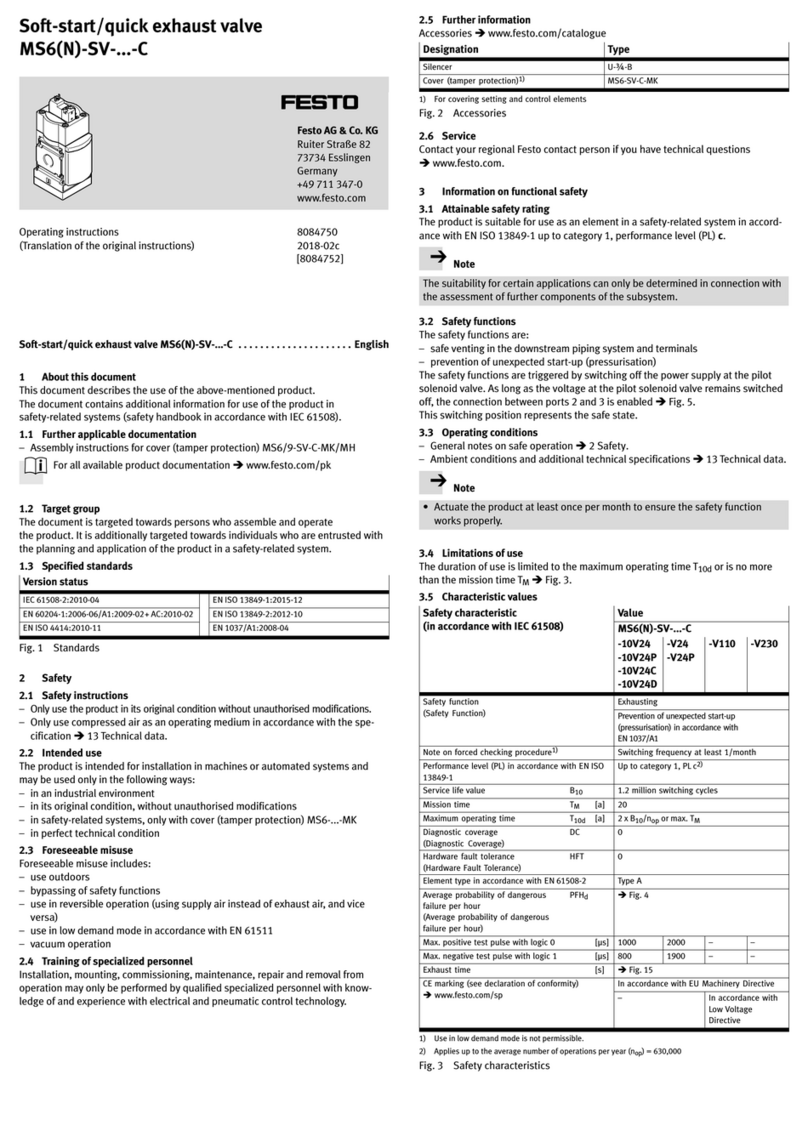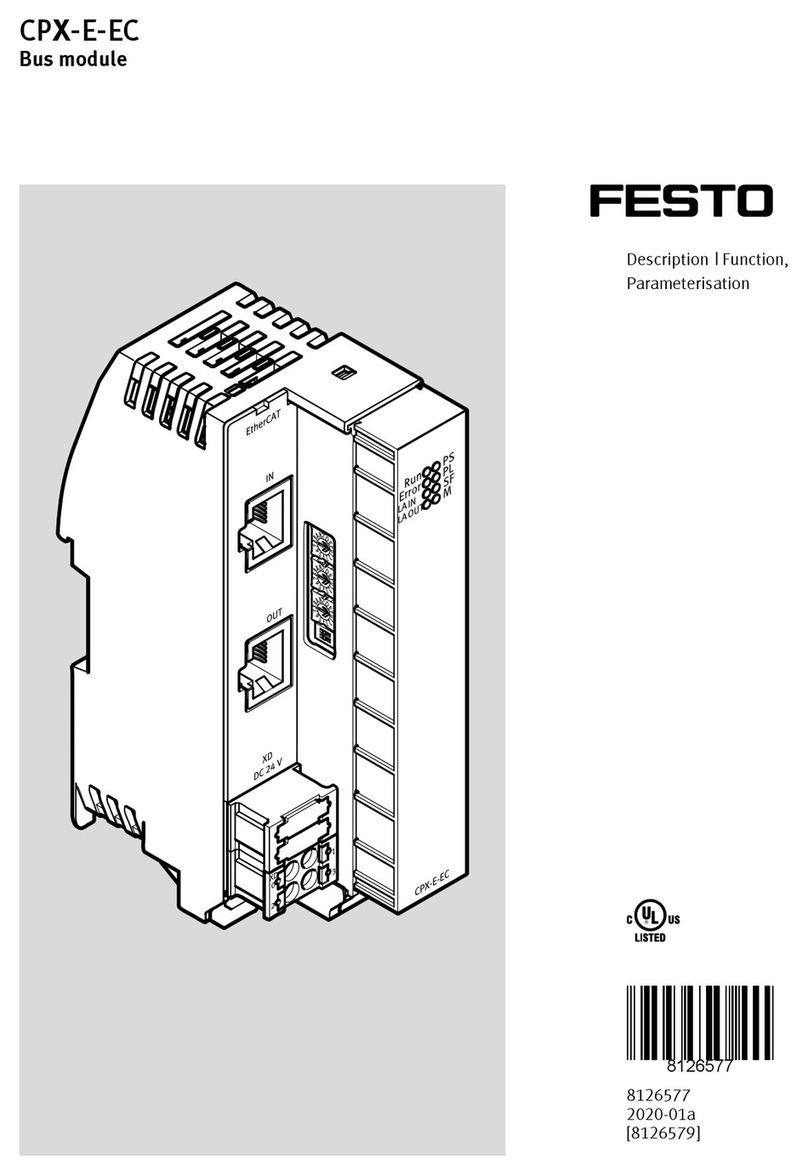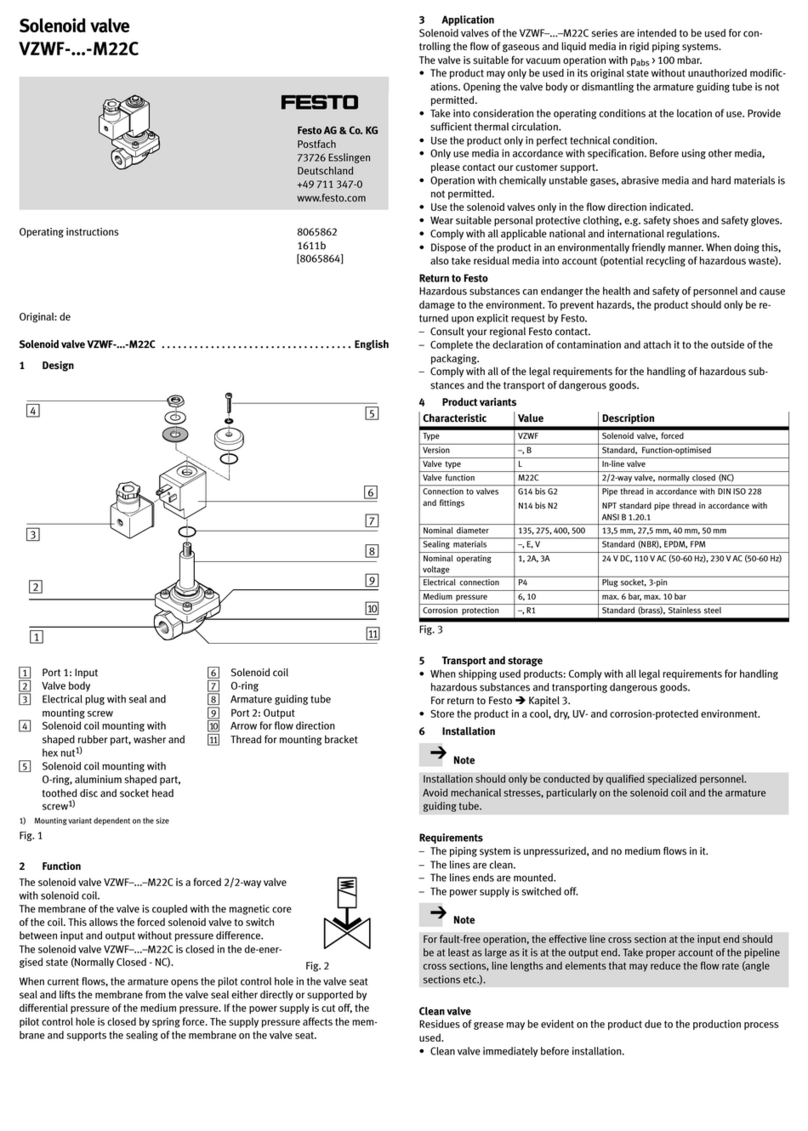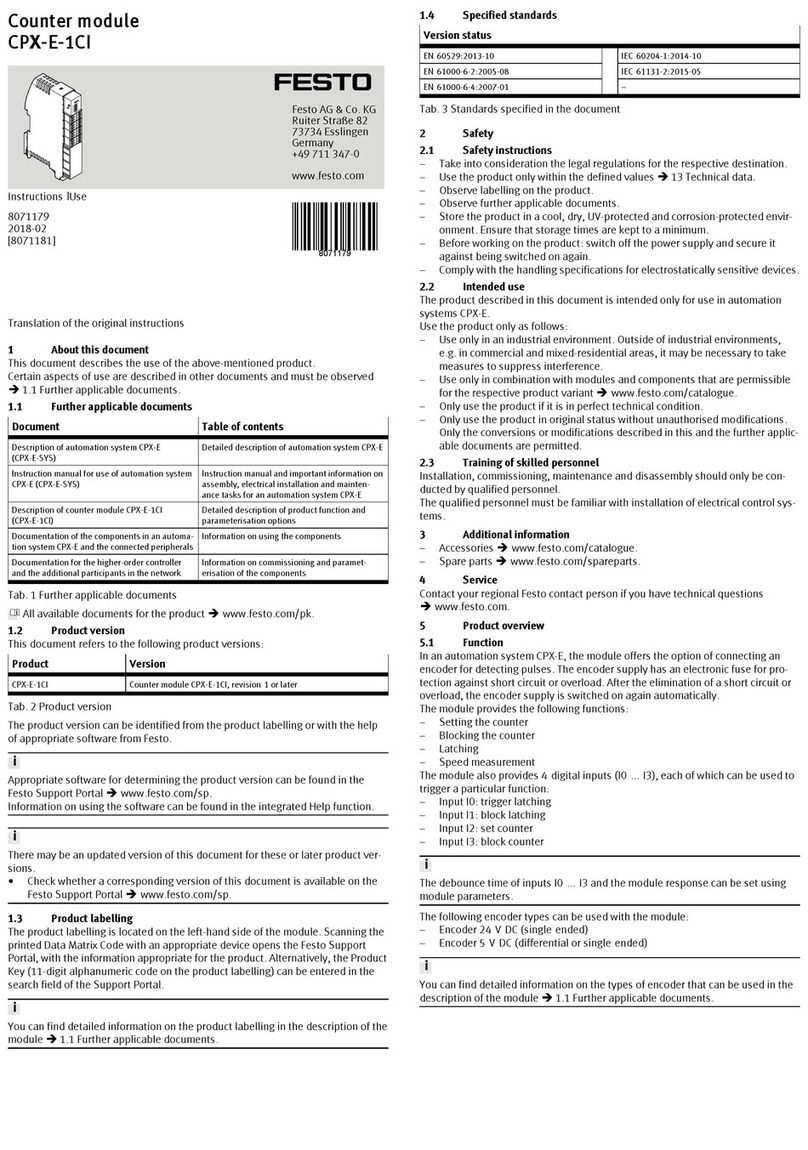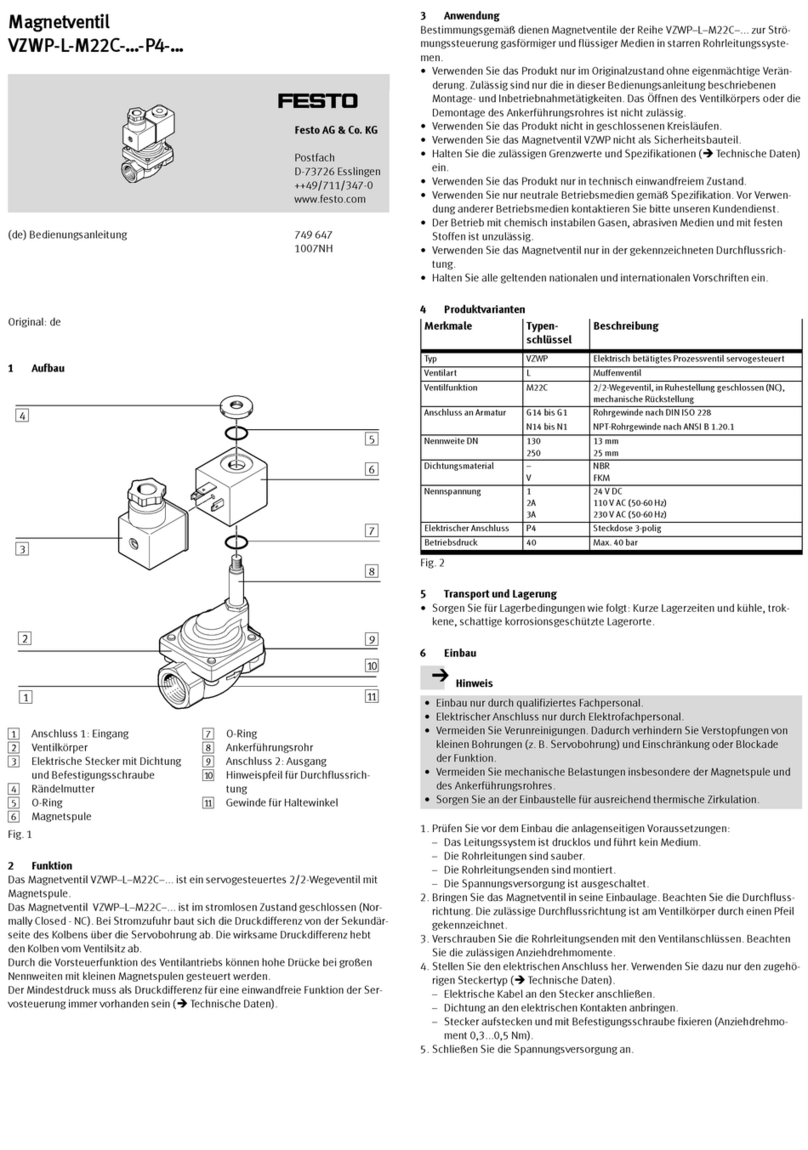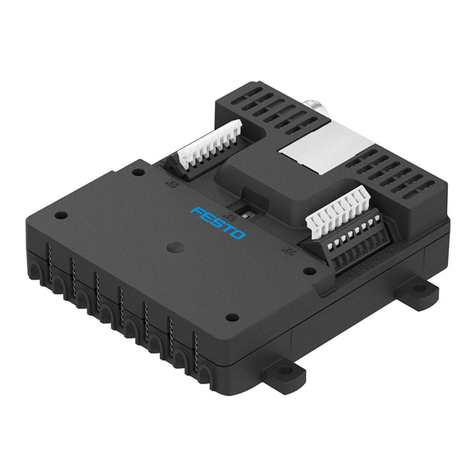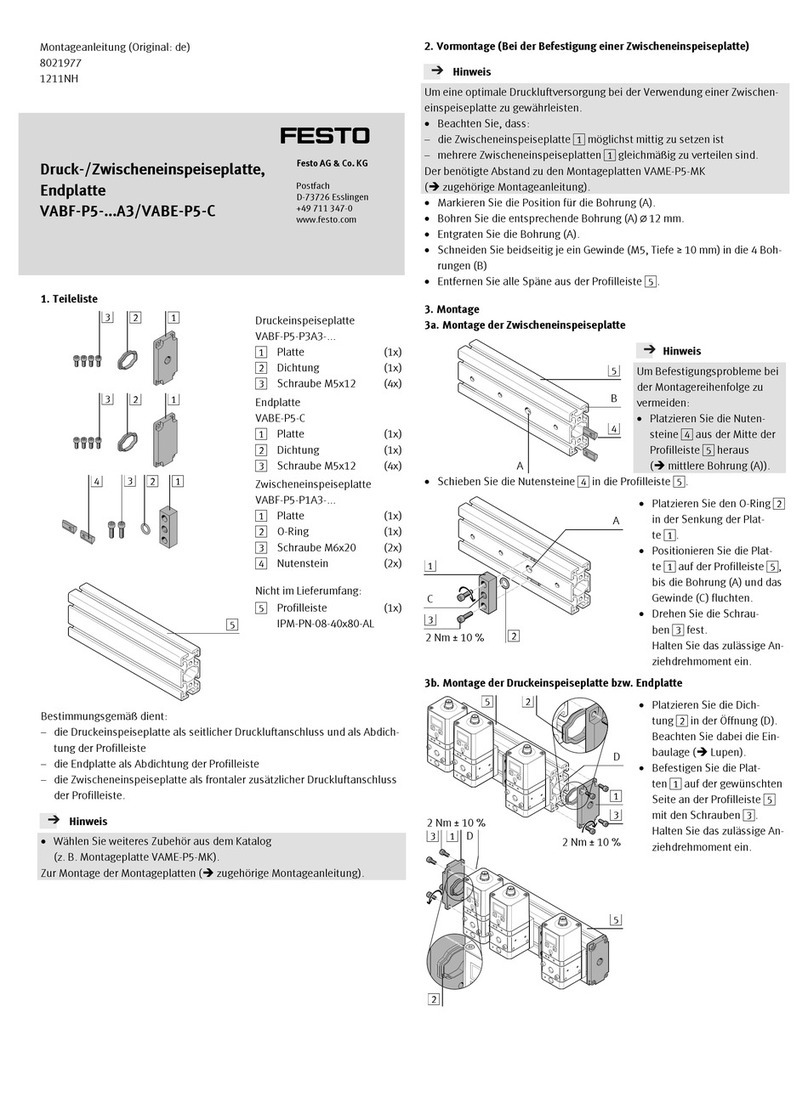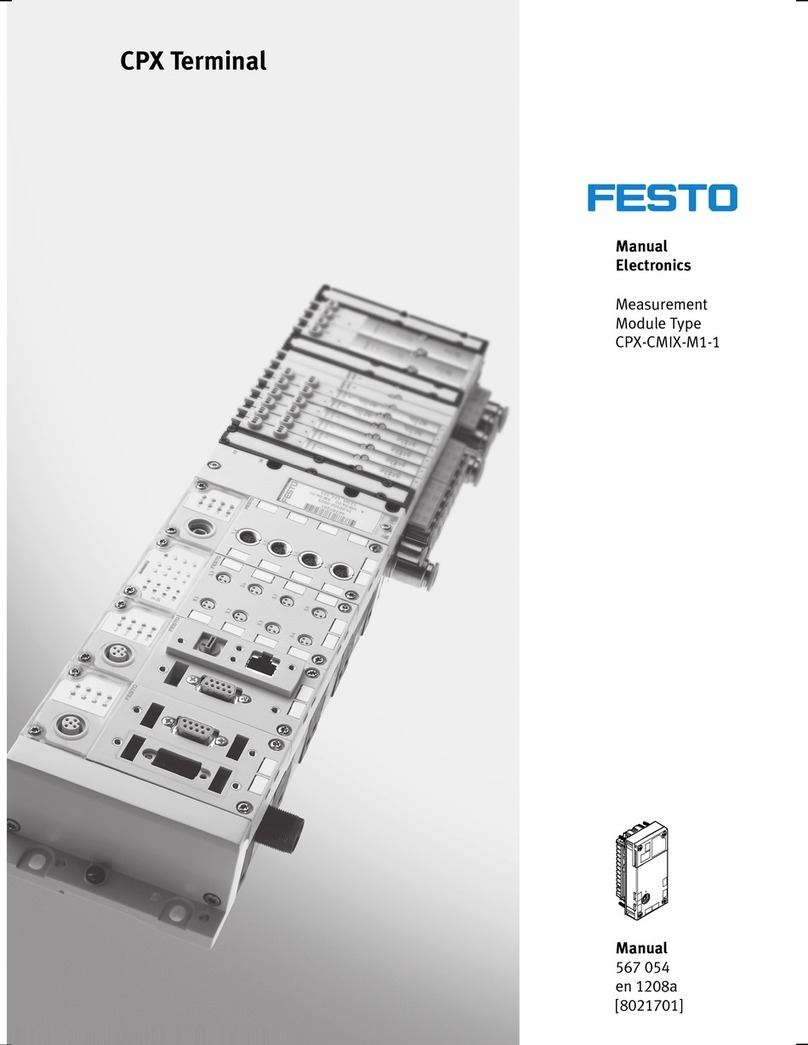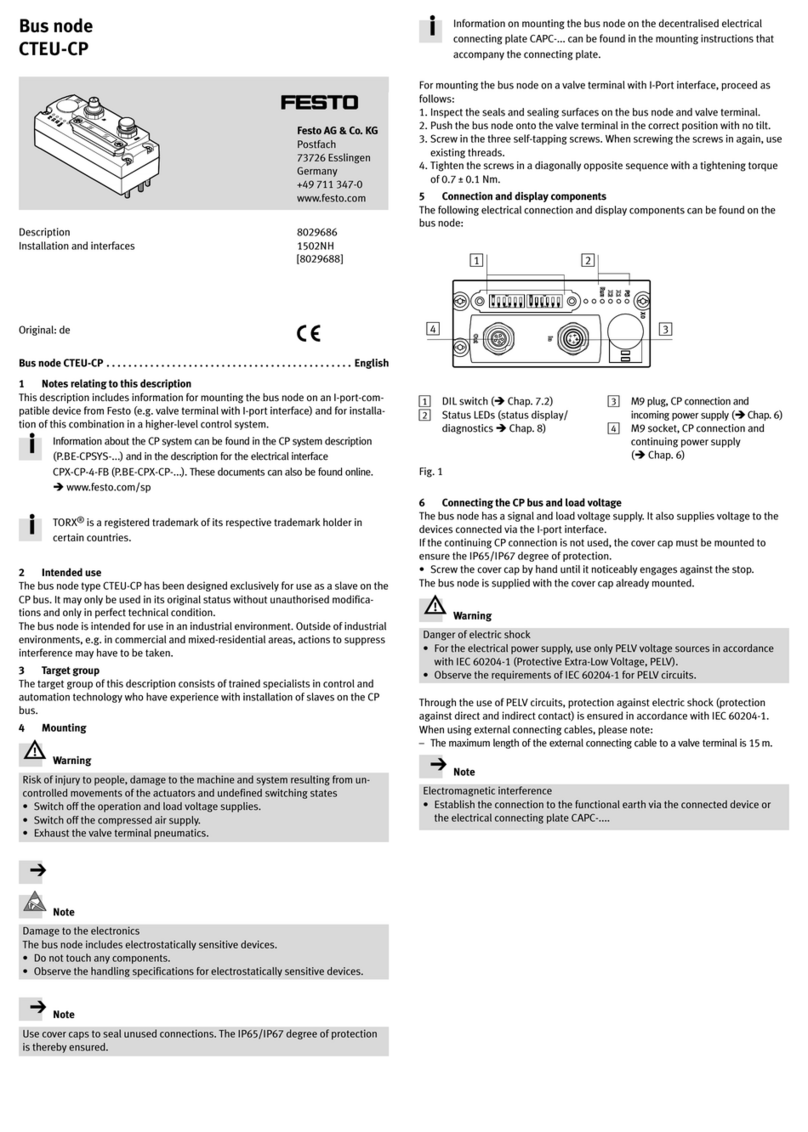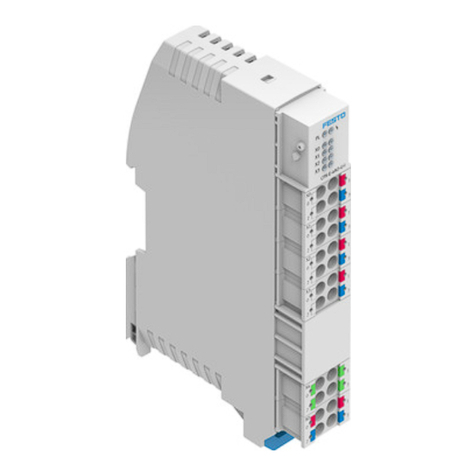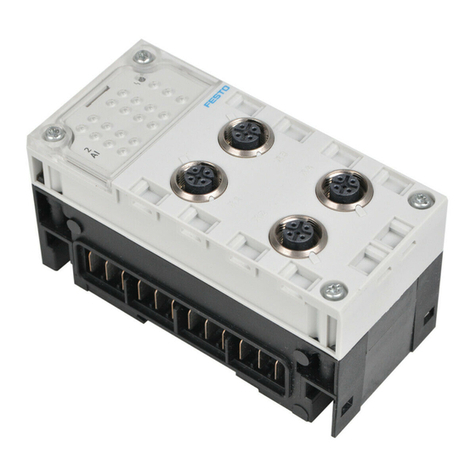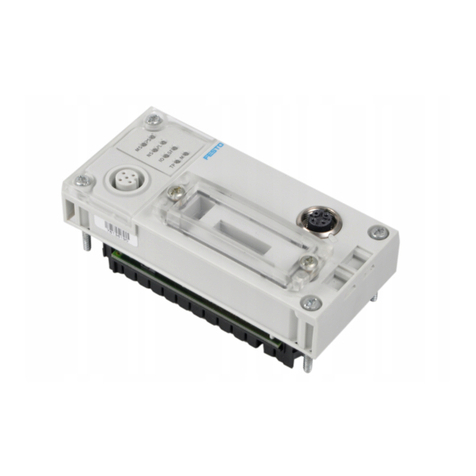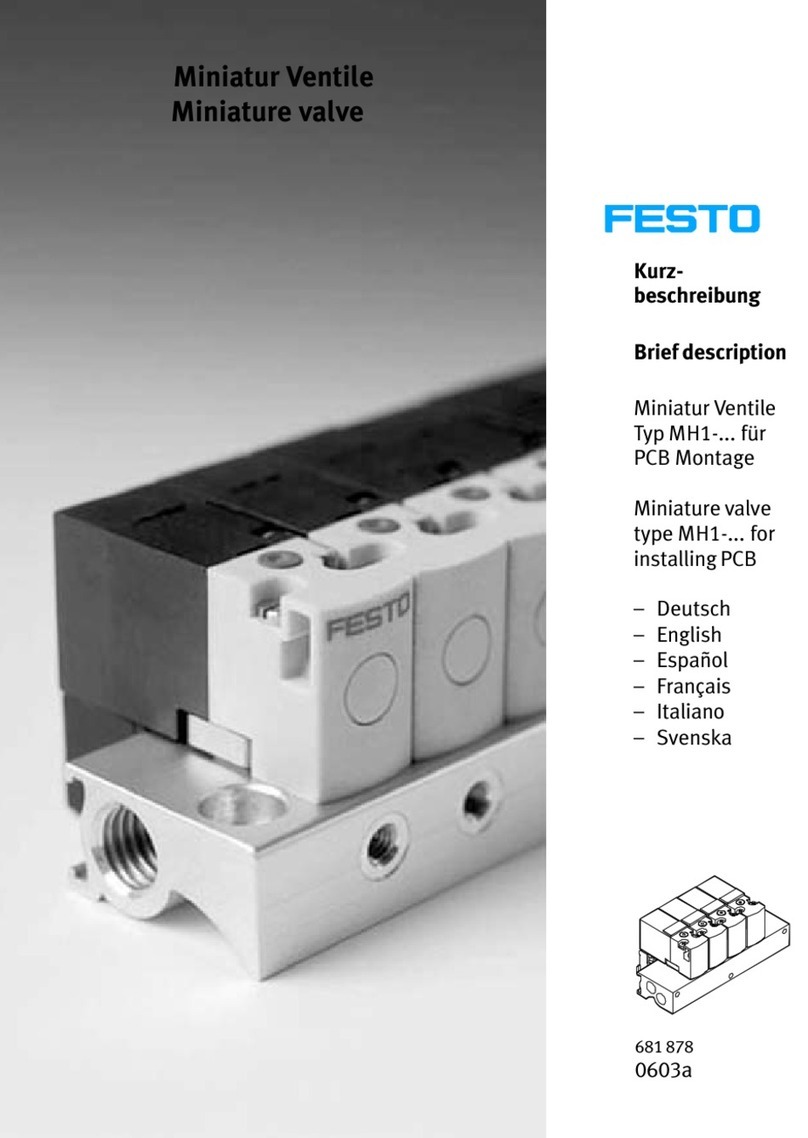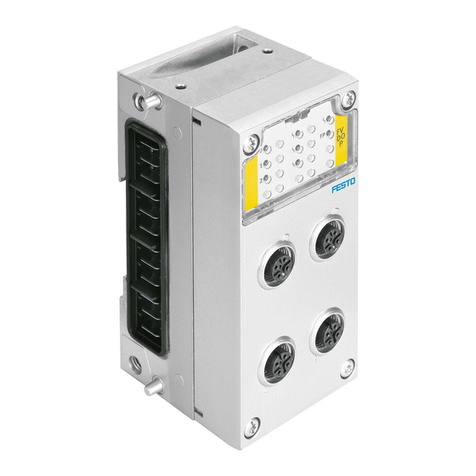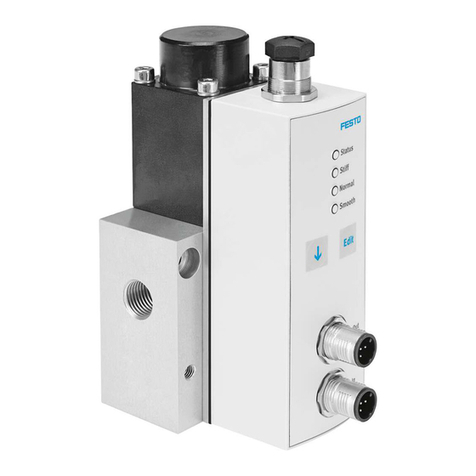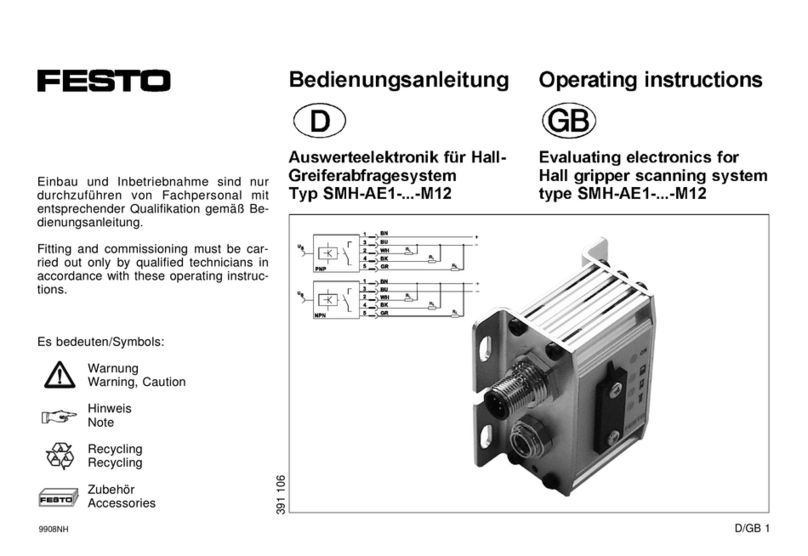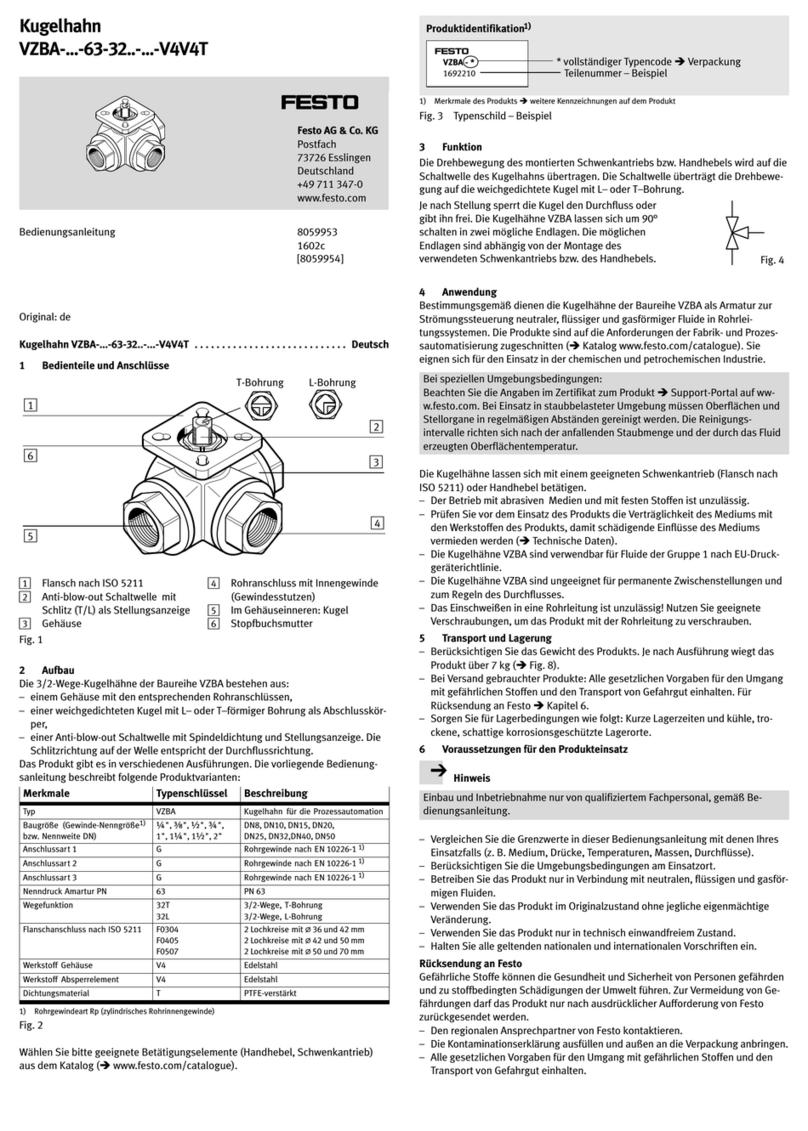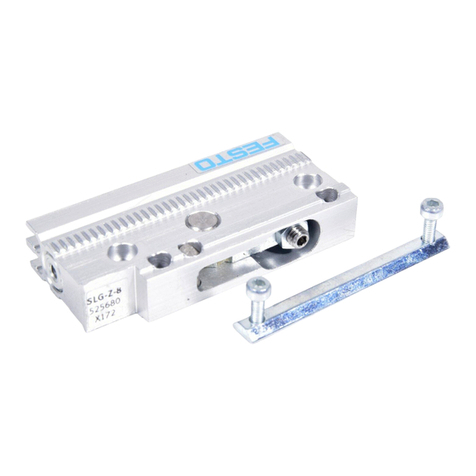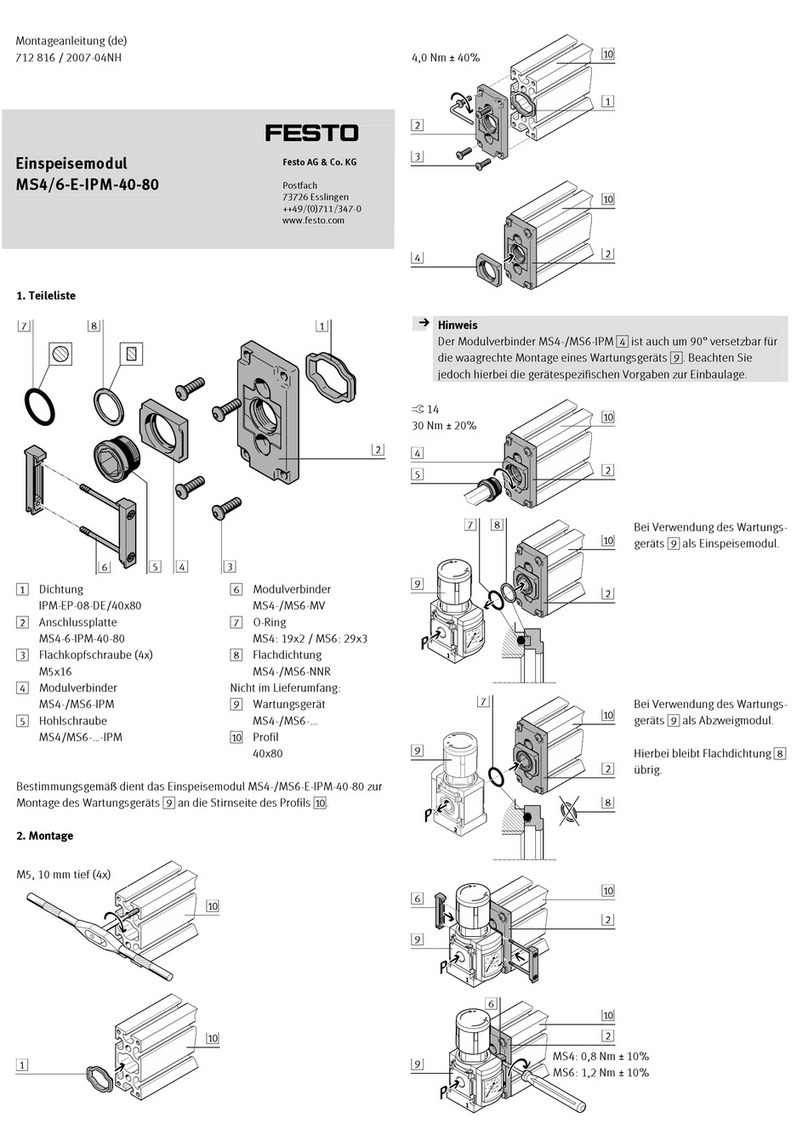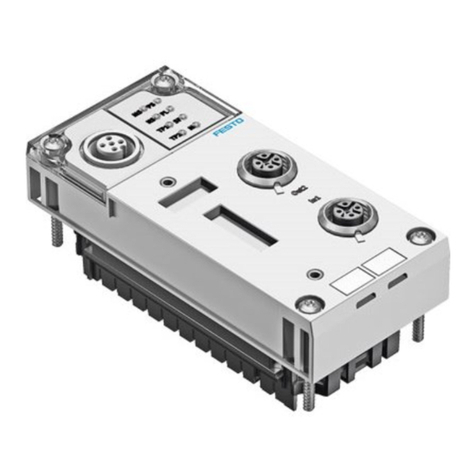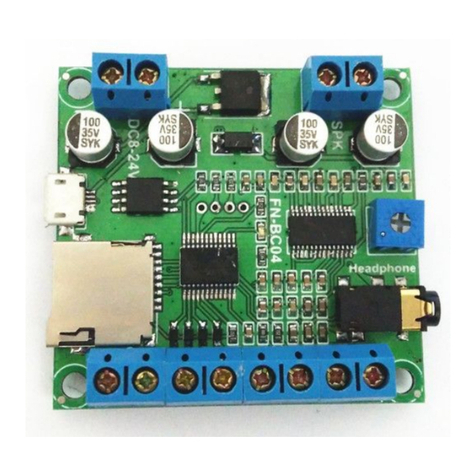
8.3 Parameterisation with the parameterisation software for the CMMP-AS
The motor controller must be completely parameterised prior to parameterisation
of the safety module using the SafetyTool. Additional information on commis-
sioning of the motor controller can be found in the parameterisation software
help or, possibly, in the functional description (firmware) for the CMMP-AS-...-M3,
GDCPCMMP- M3-FW-...
Accepting the safety module
If an engineering change is detected, e.g. a module replacement, a non-acknowl-
edgeable error is triggered. The engineering change must be explicitly accepted
or confirmed in order to be able to place the application with the motor controller
back in operation. Every replacement of a safety module CAMC-G-S3, regardless
of with an identical safety module or a different module type (switch module
CAMC-DS-M1, safety module CAMC-G-S1) must always be confirmed.
The factory supplies the safety module in the “delivery status”:
–The safety module is “validated as a whole” with the parameterisation of
the factory setting and is thus functional. The motor controller can be commis-
sioned, and the power stage and controller enable can be set.
–All error messages caused by differences in parameterisation of the basic
unit and safety module are suppressed. Hence, you can perform basic commis-
sioning of the motor controller independently of complex safety-engineering
peripherals.
Minimum circuitry in the delivery status:
–The safety functions STO and SBC are requested via DIN40.
–DIN49 terminates the safety functions, DIN48 acknowledges errors.
Wiring must not be bypassed and must be validated in the machine. The delivery
status can also be recognised without parameterisation software or SafetyTool by
the green-red flashing LED of the safety module (if DIN40 is switched on and no
safety function is requested).
8.4 Parameterisation of the safety module with the SafetyTool
The safety module is then parameterised with special software, the SafetyTool.
The SafetyTool is called up from the included parameterisation software. For
additional information è SafetyTool help.
8.5 Function test, validation
NOTICE
The safety functions must be validated after installation and after any changes to
the installation.
This validation must be documented by the person who commissions the device.
Examples of check lists as an aid to commissioning are included in the description
of CAMC-G-S3-...
9 Diagnostics and fault clearance
9.1 Status display
Status and malfunctions are displayed directly by the two-colour LED of the safety
module.
Status display on the safety module
The safety module has an LED on the front to indicate the status of the safety
function. The status LED displays the operating status of the safety module. The
display is exclusively for diagnostics and must not be used in a safety-oriented
way.
LED Status Internal status
flashing red “System Fault” The entire system is in the “System Error” or
“Communication Error” status.
red light “Safety Condition Violated”,
error response initiated
Violation of at least one of the currently required
safety functions.
yellow light “Safe State Reached” Requested safety functions are in the status
“Safe State Reached”.
flashing
yellow
"Safety Function Requested" At least one safety function requested.
flashing red/
green
“Delivery Status” Delivery status è 8.3 Parameterisation with the
parameterisation software for the CMMP-AS
flashing green “Service” status No parameters present, parameters invalid or
parameterisation session is running.
green light “Ready” Operational, no safety function requested, no
errors.
off “Initialisation Running” Initialisation 1: load parameters, initialisation
2: communication setup.
Tab. 4: LED display
Display of safety functions on the 7-segment display
STO S t O SOS S O S
SS1 S S 1 USF0
(...1, 2. 3)
U S F 0
SS2 S S 2 SBC S b C
Tab. 5: 7-segment display
9.2 Malfunction messages
The motor controller displays malfunctions cyclically in the seven-segment display
on the front of the motor controller. Error messages are displayed by “E” (for
Error), a main index (xx) and a sub-index (y), e.g. E 5 1 0. Warnings have the same
number, but are shown with bars before and after, e.g. - 1 7 0 -. The following
table lists the error messages that are relevant for functional safety in the context
of the safety module.
è The complete list of error messages can be found in the hardware documenta-
tion GDCP-CMMP-M3-HW-... of the motor controller used.
Error number
Main index Error type/class
Basic device error
51-x Control signals from the safety module, module type/identifier not OK
52-x Error in control sequence with the safety module
Error of the safety module
53-x Violation of a safety function
54-x Violation of a safety function
55-x System error: actual value recording/position encoder not OK
56-x System error: position recording/comparison not OK
57-x System error: inputs and outputs or internal test signals not OK
58-x System error: external/internal communication not OK
59-x System error of the firmware/hardware error of the safety module
Tab. 6: Error numbers
10 Operation and use
10.1 Obligations of the operator
The functionality of the safety device must be tested at appropriate intervals. It is
the responsibility of the operator to choose the type and frequency of the checks
within the specified time period. The manner in which the test is conducted
must make it possible to verify that the safety device is functioning perfectly in
interaction with all components.
10.2 Maintenance and care
The safety module is maintenance-free.
11 Repair, replacement of the safety module
11.1 Repair
è Repair or maintenance of the safety module is not permissible. If necessary,
replace the entire safety module.
–Always replace the safety module in case of a defect.
–Send the unchanged, faulty safety module with a description of the error and
the application back to Festo for analysis. Please contact your technical consul-
tant to clarify the modalities of the return.
11.2 Replacement of the safety module
If a safety module fails and has to be replaced, organisational measures must be
taken to ensure that an unsafe status is not created. To do this,
–that the safety module is not replaced by another module type without safety
functionality (switch module).
–that the safety module is not replaced by another module type with less func-
tion range (CAMC-G-S3 for CAMC-G-S1).
–the revision status of the new safety module must match or be compatible with
that of the old safety module.
–the parameterisation of the new safety module must match the parameterisa-
tion of the faulty safety module.
Observe required organisational measures to avoid errors when replacing the
module. For example, you must always generate a new validation report due to
the different serial number of the safety module.
Disassembly and installation
Before a module is replaced, the compatibility between the safety module and
basic unit must be checked.
Information on removing and installing the safety module è 6 Mounting/removal.
Accept safety module
After replacing the module, you must first accept the new safety module again
è 8 Commissioning.
Recommissioning with the SafetyTool
After accepting the replaced safety module, you must transfer the desired param-
eterisation to the safety module and then validate it. To do this, you must
first start the SafetyTool in online mode. You then have the following options,
depending on the data present from the safety module that is to be replaced:
a) Reliable parameter set available for the safety module that is to be replaced:
–Open the parameter set in the SafetyTool and upload it to the safety module.
The basic information of the basic unit must match the parameter set.
b) Stored SafetyTool project is available that conforms to the parameterisation:
–Set the safety module to the factory setting if necessary.
–Open the SafetyTool project.
–Adjust basic information to the basic unit if they don't match.
–Then validate parameter screens and upload them to the safety module.
c) If there is no data stored for the safety module that is to be replaced:
–Set the safety module to the factory setting if necessary.
–Continue as with initial commissioning.
